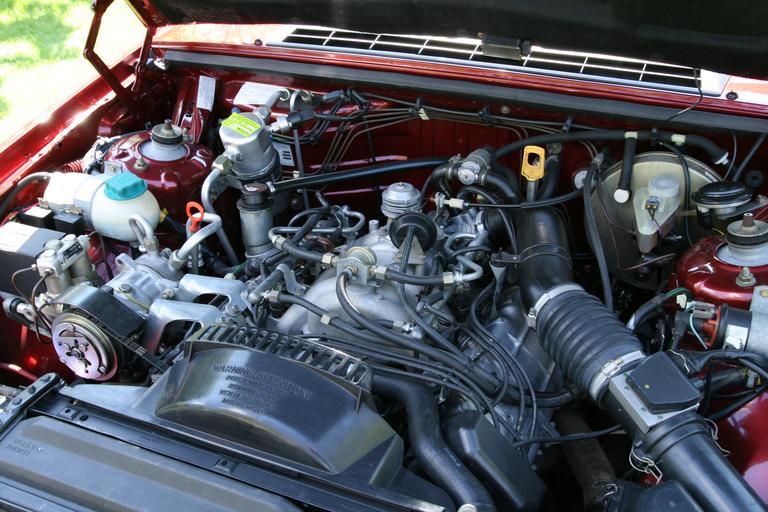
The vehicle engine functions with coolant to maintain the engine’s temperature and prevent overheating. Its function is to regulate and maintain a consistent temperature within the engine by absorbing and dissipating excess heat, preventing overheating, and promoting ideal engine performance.
However, a sudden and persistent decrease in coolant levels within your vehicle’s coolant reservoir can be a cause for concern. When the coolant reservoir keeps emptying, it indicates a potential issue that requires immediate attention. But, why does my coolant reservoir keep emptying?
The reason why your coolant reservoir keeps emptying could be because of a coolant leak, faulty radiator cap, overheating and boiling coolant, air pockets in the cooling system, and internal engine issues. Finding the reason for the constant coolant loss and fixing it is important to prevent engine damage.
Why Does My Coolant Reservoir Keep Emptying?
Here are the reasons why your coolant reservoir keeps emptying:
1. Because of Coolant Leak
One of the most common reasons for a disappearing coolant reservoir is a coolant leak. Leaks can occur in various parts of the cooling system, such as the radiator, hoses, water pump, or even the engine itself.
To identify a leak, you need to inspect the ground under your parked vehicle for puddles or stains. A green or orange-colored fluid is a clear sign of a coolant leak.
To fix a coolant leak, you need to carefully examine all components of the cooling system for visible damage or corrosion. Check the radiator hoses, the radiator itself, and the water pump.
You need to also inspect the engine for any signs of coolant seepage. If you find a leak, repair or replace the damaged component immediately to prevent further coolant loss and possible engine damage.
2. Faulty Radiator Cap
The radiator cap plays a crucial role in maintaining the pressure within the cooling system. If the cap is faulty, it can lead to coolant loss. A damaged or worn-out radiator cap may not seal properly, causing coolant to evaporate and escape from the reservoir.
To check the radiator cap, examine it for visible signs of wear, such as cracks or a damaged seal. If the cap appears compromised, replace it with a new one. It is advisable to use a cap recommended by the vehicle manufacturer to ensure compatibility and proper functioning.
3. Internal Engine Issues
Internal engine problems can also contribute to coolant reservoir drainage. A leaking cylinder head gasket or a cracked engine block may allow coolant to mix with the engine oil or escape into the combustion chambers, leading to coolant loss.
If internal engine issues are suspected, it is crucial to conduct a comprehensive inspection. Look for symptoms such as white smoke from the exhaust, oil that appears milky, or the presence of coolant in the engine oil. If any of these signs are present, immediate repair and replacements of the damaged parts are needed.
4. Overheating and Boiling Coolant
If your engine is running too hot, it can cause the coolant to boil and escape through the overflow tube connected to the reservoir. Overheating may result from a malfunctioning thermostat, a failing water pump, or insufficient coolant levels.
To address overheating issues, start by checking the thermostat to ensure it opens and closes properly. Inspect the water pump for leaks or signs of failure, and replace it if necessary. You must ensure the radiator is functioning correctly and that there are no obstructions restricting airflow.
5. Air Pockets in the Cooling System
Air pockets within the cooling system can prevent proper circulation of coolant, leading to overheating and subsequent coolant loss. When performing coolant refills or system maintenance, air can get trapped, causing inefficient cooling.
To eliminate air pockets, follow the manufacturer’s guidelines for bleeding the cooling system. This involves opening a valve or removing a bleed screw to allow trapped air to escape while filling the system with coolant.
Proper bleeding ensures the cooling system operates efficiently and reduces the risk of coolant reservoir drainage.
What To Do If Your Coolant Reservoir Keeps Emptying?
If your coolant reservoir keeps emptying, you should take the following steps to identify and address the issue:
- Inspect for Leaks: Check for visible signs of coolant leaks around the engine, radiator, hoses, and water pump. Examine the ground under your parked vehicle for puddles or stains, indicating a coolant leak.
- Check the Radiator Cap: Inspect the radiator cap for visible signs of wear, damage, or a compromised seal. Replace the radiator cap with a new one if it appears faulty.
- Examine Internal Engine Issues: Look for symptoms of internal engine problems, such as white smoke from the exhaust, milky oil, or coolant in the engine oil.
- Address Overheating Issues: Check the thermostat to ensure it opens and closes properly. Inspect the water pump for leaks or signs of failure, and replace it if necessary.
- Bleed the Cooling System: Follow the manufacturer’s guidelines to bleed the cooling system, eliminating air pockets that may hinder proper coolant circulation.
Conclusion
Having a consistently filled coolant reservoir is important for the health and longevity of your vehicle’s engine. Therefore, when you notice your coolant reservior keeps emptying itself, it’s an indication that something is terribly wrong somewhere.
The primary culprit is usually a coolant leak. Find the cause of the problem and fix it as soon as possible to ensure the reliability and efficiency of your vehicle’s cooling system, preventing engine damage and costly repairs in the long run.









